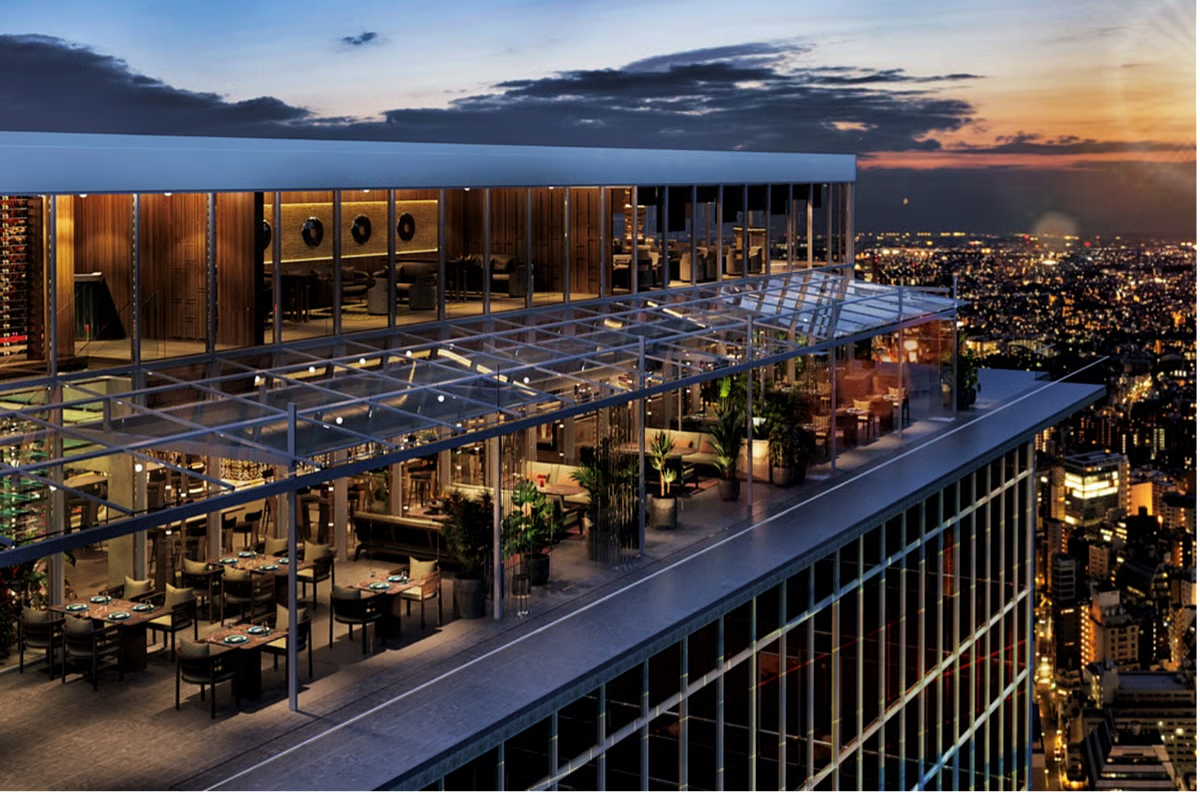ADMO Lifestyle Holding — Stathis’ joint venture with UAE-based Alpha Dhabi Holding ADMO Lifestyle Holding — Stathis’ joint venture with UAE-based Alpha Dhabi Holding — is now leveraging Dubai as the central hub for projects such as CÉ LA VI and Nammos
Is Dubai about to become known as the foundational city for building and launching global brands? This September, international hospitality investor Petros Stathis, Chairman of Nammos World and Monterock International and ADMO Lifestyle Holding Vice-Chairman, will bring one of his signature brands – CÉ LA VI – from Dubai to London rather the other way around. With more names from his food and beverage empire planned to follow, this progression of Dubai-first, Western world cities after, is set to become a reliable business trend.
Stathis — dubbed by Rolling Stone magazine and others as the “King of Luxury” — is perhaps best known for his brand Nammos, the Mediterranean beach-bar concept with a Dubai branch which counts as the highest-earning restaurant in the world. Just like its iconic rooftop bar cousin CÉ LA VI, Nammos went global by coming to Dubai first, not second, third, or fourth and after branches in the British or a European capital or a major US city had already been established.
“It used to be that world-renowned restaurants or international hotel chains would emerge from their original locations direct into cities such as London and New York before expanding to places like Singapore and Paris” explains Stathis.

Petros Stathis, Chairman of Nammos World and Monterock International and ADMO Lifestyle Holding Vice Chairman.
“But, in recent years, it is Dubai that is increasingly becoming that second step, if not even the first in quest to go global. In my own business, I have specifically sought to build brands in Dubai — and then expand them globally — rather than the other way around.”
CÉ LA VI’s imminent London opening, on the rooftop of the celebrated Renzo Piano building in the city’s Paddington Basin district, represents its third stepping-stone to iconic international status. First opening in on the rooftop of the Marina Bay Sands Tower in Singapore before expanding to other locations in Asia, the brand’s first foray outside its founding region was to Dubai. Now permanently established within the Emirati F&B scene, CÉ LA VI becomes Stathis’ spearhead brand to tread the path that others in his expansive portfolio will follow from Dubai into London’s highly competitive hospitality sector.
Though Nammos will come after CÉ LA VI to London, the brand already represents the most cogent example of how the stepping stones to creating global brands are being re-arranged. Originally launched in Mykonos in the 1960s, the brand stayed local for decades – until it expanded for the first time internationally to Dubai. Since that move, under Stathis’ leadership Nammos has successfully entered Cyprus, Sardinia, and is scheduled to open in locations in London, Saudi Arabia, and the Maldives.

This pivot reflects a broader trend: companies that once viewed Dubai as a luxury outpost after expansion elsewhere are now making it their operational base for global brand development. ADMO Lifestyle Holding — Stathis’ joint venture with UAE-based Alpha Dhabi Holding — is now leveraging Dubai as the central hub for projects such as CÉ LA VI and Nammos.
Why is this happening? Dubai’s transformation into a global brand accelerator is being fuelled by three key factors, according to Stathis.
First, the city’s strategic location at the intersection of Europe, Asia, and Africa provides fast and reliable access to international markets. With two of the world’s busiest airports and world-class infrastructure, Dubai offers luxury brands immediate proximity to a high-spending, globally mobile audience.
Second, the affluent and cosmopolitan consumer base within the city is uniquely positioned to support premium concepts. “Dubai has consumers with global tastes, high expectations, and significant spending power,” says Stathis. “If your concept can thrive here, you know it can thrive elsewhere.”
Third, Dubai’s rapidly expanding English-language media landscape has given homegrown and relocated brands the visibility they need to gain international traction. A combination of local publications and regional editions of global media platforms ensure that successful launches in Dubai reach beyond the city’s borders.
Stathis is not alone in his thinking. Trèsind, a Michelin-starred restaurant serving modern Indian cuisine, is another example of reverse expansion. It built its brand in Dubai and later opened in Mumbai. Similarly, the Jumeirah hotel group built its flagship properties in the UAE before expanding into London, Capri, and other major tourism hubs.
Stathis continues to invest in lifestyle and hospitality assets that match the scale and ambition of Dubai itself. With upcoming launches across Europe, the Gulf, and Southeast Asia, his portfolio reflects a clear model: build and validate in Dubai — then expand.
“Brands no longer need to wait for validation from London or New York,” says Stathis. “Dubai is where you go when you’re serious about becoming global.”
Source: Khaleej Times
Published: 25 August 2025

